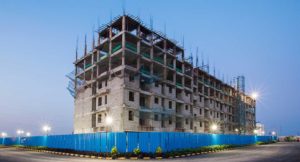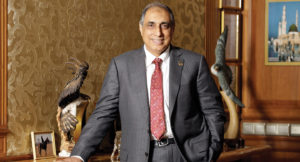Godrej & Boyce’s Industrial Products Division’s Chief Operating Officer, Kaustubh Shukla talks about the company’s disruptive innovative ideas, marketing techniques and the future growth strategies which include a steady growth rate of 25 per cent in the coming years
Industrial Products sector, particularly the Capital Goods sector, has gone through challenging times in the recent past, and Godrej & Boyce (G&B) is no exception to that. If you look closely at the company’s decade long journey, you would see that it has maintained a steady CAGR of 20 per cent largely aided by certain strategic decisions taken by the key team led by Kaustubh Shukla, the Chief Operating Officer of the Industrial Products Division of Godrej & Boyce. In his nearly three decade stint, Shukla has managed many responsibilities such as Sales, Marketing, Production and Systems. In 2002, he became the head of the Industrial Products Group which comprises of four Divisions – Process Equipment, Tooling, Aerospace and Precision Engineering. This Industrial Products Division decided to stay sharply focussed on customer segments such as Oil & Gas, Petrochemicals, Power, Wind Energy, Auto Industry, Aerospace & Defence and Nuclear Power, created competitive advantage with their capabilities and capacity and created superior customer experience in these challenging times.
In this conversation with Poornima Kavlekar, he talks about the company’s disruptive innovative ideas, marketing techniques and the future growth strategies which include a steady growth rate of 25 per cent in the coming years.
Godrej & Boyce is well known for its disruptive innovative ideas. Your take on this and the role such ideas play in the industrial products division?
Innovation is in the DNA of the company, and hence, it runs across all Godrej & Boyce Businesses and manifests itself in products and processes. For consumer durable products, it manifests into a product idea or an experience, while for industrial products, innovations are mostly in processes that create competitive advantage by enhancing productivity, quality or yield. So, all the Industrial Products Businesses are constantly innovating. These are driven either through Kaizens or Improvement Projects.
What is the current state of your user industries and where do you see the industrial products division’s growth headed?
Some of the sectors are experiencing challenges. For instance, the oil and gas sector – the new price point of crude oil poses a challenge for feasibility of new projects. Two years back we wouldn’t have thought of this level. But now, look at the impact it has on the economy.
It is no doubt that the current state is challenging and the last couple of years were not the best of years. Similarly, wind energy sector has experienced challenges in the recent years. But, we see that changing especially as we track the rate of enquiries and the fresh orders that we are winning. If this sustains, maintaining a 25 per cent CAGR should not be a problem. With an adequate order pipeline and a focus on building muscle, we are heading for a hectic phase of growth.
Marketing techniques for a niche segment like yours is highly focussed and measurable. Can you take us through your division’s marketing techniques and how it has evolved over the years, especially with the advent of new platforms?
For our existing products, marketing is all about creating great customer experience. Simply put, we want to be customer centric and delight our customers on every project we execute for them. How we handle pre-order, post-order, project execution and how transparently we exchange information with a customer makes a difference.
We show a lot of flexibility in accommodating a customer’s requirement and understanding the primacy of the project in terms of timeline and quality. And that is a great way of creating customer experience. Once you do that, marketing is done. Top of the mind recall for a customer would be based on what they experienced the previous time. The metrics we use to measure are things like repeat order, share of business with the customer, does the customer recommend us to his/her associates and so on.
We also have a process by which we gauge our performance vis-a-vis what the customer would have received from others vendors. We are very competitive about it. Once we learn to do that, any prospective customer would choose us knowing how well we are serving the existing customers. And that is a vote of confidence in us as an organisation.
The company has a strong foothold in the space, defence and space exploration sectors. Are you planning to add more capabilities to cater to this sector?
We are way ahead of the curve in these sectors, however, capability building is a never-ending task. These sectors require a great amount of capability and large upfront investment, which we made over two decades back. One must develop capability before addressing a customer need. The bottom line is that we have to be ahead of the curve, and we have done so.
In fact, possessing an array of proven capabilities creates a sustainable long-term competitive advantage. So, we have several programmes underway – automation is one such thing. We are executing very sophisticated and complex projects in the sectors chosen. Developing capacity and capability to provide service to the end user during the service life of the equipment are adjacencies we are developing. We are developing competencies in newer metallurgies and are also working to develop advanced Composites, the material of the future for high temperature applications.
The company’s association with BrahMos and Defence Research and Development Organisation (DRDO) has been quite in-depth. Please share a few key learnings that you have had from the BrahMos project?
Brahmos is a very complex program. We are dealing with a large variety of metallurgies and technologies. Every article that we produce has about 2,500 individual components and each one of these parts goes through upto 20 stages. So effectively, there are more than 20,000 inspection stages before an article can be delivered. To be able to do so, consistently is a huge challenge & achievement. This has taught us strong project management skills and has also helped develop several technologies and processes. We have new insights on quality assurance. This program has made us an extremely capable organisation with confidence to take up large complex programs, or developing new technologies.
Where do you see the company going in the coming years and what are your plans to help it achieve the vision?
Today, at the macro level, we have seen a sustained growth and are looking at a 25 per cent CAGR in the coming years. There is so much happening under innovation, design thinking, new products, new markets / opportunities. Based on the solid foundation we have and leadership position in almost all our product categories, I see Godrej as on the verge of explosive growth.
PROFESSIONAL AND PERSONAL LEVEL LESSONS LEARNT AT GODREJ
Think long term.
Perform complex programs in a regimented manner.
Work to earn the trust of customers and your team.
Be fair and transparent.
There is no failure. Only feedback. If the result of your endeavour is not as expected, don’t beat yourself over it. Clinically examine what should have been the result and what should be done.



